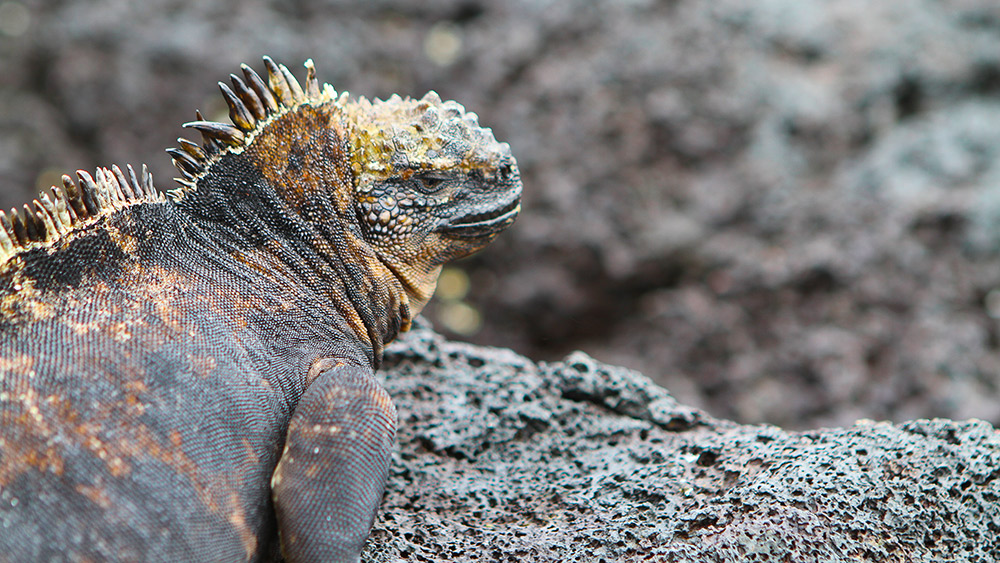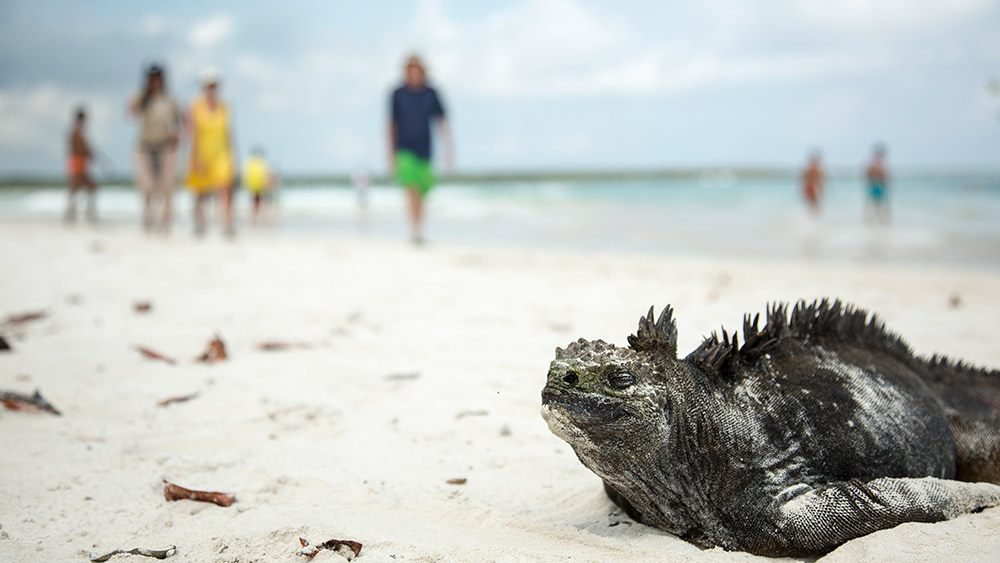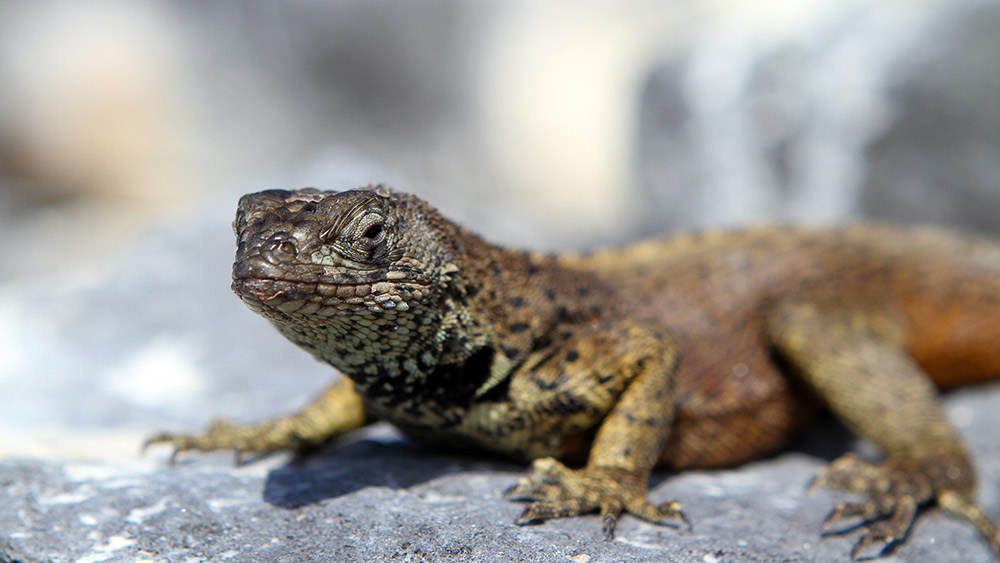The marine iguana (Amblyrhynchus cristatus) is one of the most unique creatures of the Galapágos Islands. Described by Charles Darwin as “hideous-looking” and “most disgusting” they are far less photogenic than say the blue footed boobie, giant tortoise, or the Galapágos sea lion, but they make up in lifestyle for what they lack in looks.
The marine iguana is an intriguing creature that for years has led scientists and travellers alike to learn more about its fascinating habits. They are the world's only sea-going lizards and are distinguished from land iguanas (though both are thought to descend from a similar species around 10 million years ago) by their evolutionary features. The most obvious are their short, blunt snouts for foraging seaweed, and their laterally compressed tails, which helps the marine iguana move more efficiently along the surface and beneath the water. They also have unique cranial exocrine glands that expel excess salt in a process much like sneezing. This salt then becomes encrusted on their faces giving them a lighter pigment.

It's the salt they expel from their glands that gives the marine iguana's face a lighter colour.
Their famously harsh habitat spreads throughout all of the Galapágos Islands coastal regions. Typically, they dive to depths in between 1-5m (3-16 ft) to find food (algae clinging to rocks on the newly formed volcanic shores). However it is possible for the iguanas to dive up to 15m (49 ft) and stay under for recorded periods of up to 30 minutes continually looking for food. The marine iguana has strong limbs and well adapted claws for climbing and traversing rocks, both while underwater and on land.
It’s thought that the marine iguana was brought to the Galapágos from South America by a natural raft — a piece of driftwood or a bundle of floating debris. Although each island hosts different populations that vary in size and colour, all of the Galapágos marine iguanas are considered to be a single species. The smallest are found on the island of Genovesa, while the largest are found on Fernandina and Isabela islands.
As an ectothermic animal (cold-blooded), they can spend only a limited time in cold water diving for algae. Before diving for food, the iguana must raise its body temperatures to approximately 36°C (96°F). During the dive, they can lose up to 10°C (50°F) of their body temperature. In order to regulate these fluctuations, after their dive, they must bask in the sun for long periods of time. During this sunbathing session, they are unable to move as effectively, making them vulnerable to predators.

Cold-blooded marine iguanas need to warm up in the sun.
The iguana has evolved no defences against non-native predators, including rats — which tend to feed on the eggs — cats — which can feed on juveniles — and dogs — which may threaten adults. However, this constant threat is counteracted by the marine iguana’s aggressive nature, which consists of biting and expansive bluffs when in this disadvantaged state. Their genuinely dark shade of grey/black also aids them in heat reabsorption, which eventually allows them to move more freely — this helps them avoid predators.
Marine iguanas have an estimated population within the hundreds of thousands and are a protected species under Ecuadorian law. That said, they are under constant threat of habitat loss and intrusion from non-native predators. By monitoring ocean level and water temperature discrepancies, scientists can get a better idea of how marine iguanas will be affected in the future, but for now they stand one of the most unique creatures endemic to the Galapágos Islands.

Locking eyes with this marine iguana on Punta Suarez.
Getting There
G Adventures runs a number of departures in the Galapágos Islands encompassing a wide range of departure dates and activities to cater to different tastes. We’re thrilled at the prospect of showing you this big blue planet of ours — check out our small group trips here.























